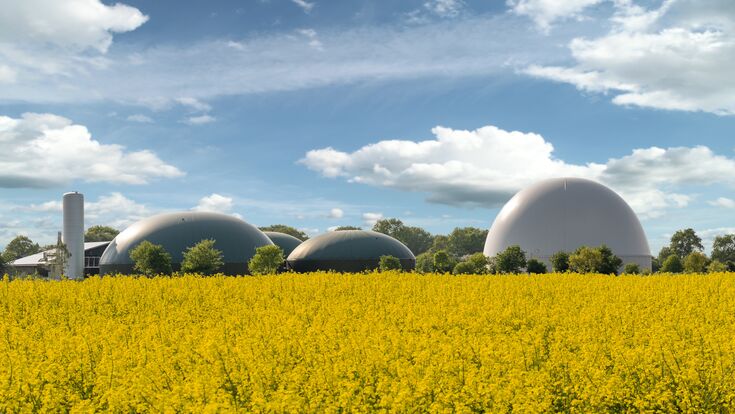Renewable Natural Gas : Q&A: The Biomethane Industrial Partnership

When and why was the Biomethane Industrial Partnership formed?
The Biomethane Industrial Partnership was established on the initiative of the European Commission in 2022, following the adoption of the REPowerEU plan. With the outbreak of the war in Ukraine, reducing dependence on Russian natural gas imports and tackling high energy prices became imperative, alongside tackling the climate crisis. As a result, the European Commission introduced, among other measures, a target to increase the EU’s annual production and use of sustainable biomethane to 35 billion cubic metres by 2030. Biomethane is the cheapest and most scalable renewable gas available today. In line with this strategy, the Commission announced the creation of a Biomethane Industrial Partnership (BIP) to support the achievement of this target by 2030 and to create the conditions for a further increase towards 2050. The official launch of the Biomethane Industrial Partnership took place on 28 September 2022, during European Sustainable Energy Week, in the presence of Executive Vice-President Timmermans and Commissioner Simson.
What are the main tasks of the BIP?
The Biomethane Industrial Partnership acts as a strategic platform to facilitate dialogue between private and public stakeholders in the biomethane sector. Its main objective is to foster collaboration between all key stakeholders to support the achievement of the target of 35 billion cubic metres of sustainable biomethane production and use per year by 2030, and to create the conditions for a further increase in its potential towards 2050. The Partnership is made up of representatives from industry, academia, government and civil society. This diverse composition and overarching collaborative approach allow for a direct exchange between all stakeholders, fostering a balanced dialogue and a deeper understanding of each other’s positions, ultimately accelerating progress towards the 35 bcm target.
Related article: Biomethane: The solution for Europe's energy independence?
Have the task forces already produced results?
The BIP consists of six Task Forces, each dedicated to a different topic related to the development of the biomethane sector. Task Force members meet to discuss the barriers faced by the sector and work together to identify solutions at all levels: economic, technical and regulatory. This work culminates in the production of specific deliverables, typically in the form of written reports. These reports serve as the basis for various communication initiatives aimed at disseminating the knowledge gathered, including conferences, webinars, informative videos, infographics, etc. Since the start of their work, each Task Force (with the exception of Task Force 6, which only started last April) has produced at least one deliverable, with Task Forces 2 and 4 having already published 2 deliverables each. In particular
- Task Force 1 published the report “Biomethane incentives and their effectiveness” – download here.
- Task Force 2 published two reports:
◦One on the EU biomethane internal market “A vision on how to accelerate biomethane project development” – download here.
◦ One on permitting “Accelerating biomethane permitting” – the report and the factsheet. - Task Force 3 published a report “Feedstock production from marginal and contaminated land” – download here.
- Task Force 4 produced two reports:
◦ One on biomethane production costs titled “Insights into the current costs of biomethane production from real industry data” – the executive summary and the full study
◦ One on biogenic CO2 from the biomethane sector titled “Biogenic CO2: the role of the biomethane industry in satisfying a growing demand” – download report here. - Task Force 5 published a report on “Innovative technologies for biomethane production” – the report and the factsheet
What is the time frame for the work of the BIP?
The work of the Partnership is based on the initial Work Programme adopted in 2022, which is detailed year by year in the annual work plans. The priority themes for 2024 were identified earlier this year and include: guiding the development of national strategies, facilitating cooperation between Member States, improving cross-border trade in biomethane, valorising BioCO2, promoting sustainable feedstock use, optimising biomethane grid integration, valorising digestate, promoting e-methane production and advancing novel technologies.
Looking to the future, reflection on the strategic direction for 2025 has already begun. While the Partnership’s primary focus is on achieving the 2030 biomethane production target, it also aims to create the necessary conditions for a further ramp-up towards 2050. The project is not scheduled to end at a specific point in time, but its duration will depend on the ongoing need to accelerate the production of sustainable biomethane.
Who can join?
Anyone who agrees with the goal of the BIP and is willing to actively work towards it can become a member. To become a member, they must submit an application via our website (link provided here).There are two types of membership: BIP Membership and Task Force Membership. BIP membership is open to all stakeholders with no specific selection criteria. It allows them to be consulted on draft deliverables and to participate in BIP events. Task Force membership requires the fulfilment of some selection criteria (outlined in the BIP Work Programme), as it involves stakeholders at expert level who can contribute significantly to the preparation of BIP deliverables.
Related article: Biomethane: On the road away from fossil fuels


